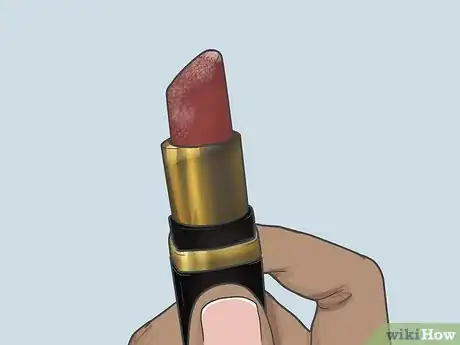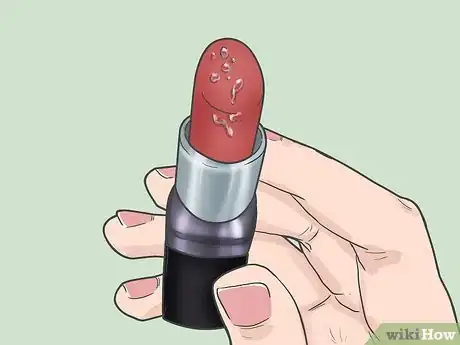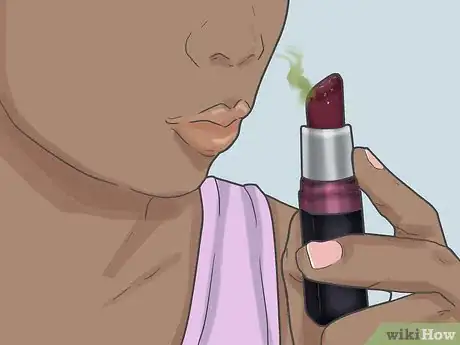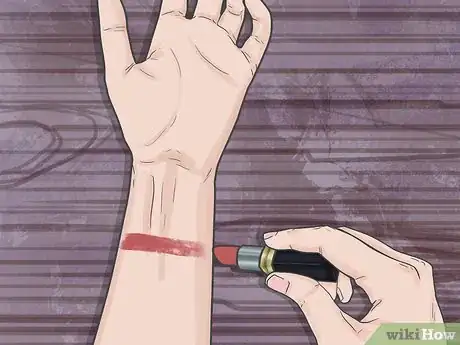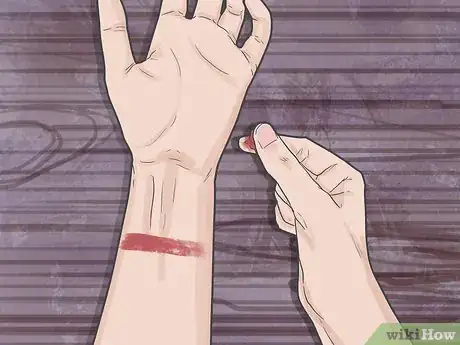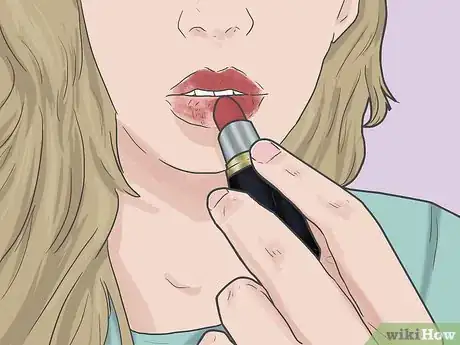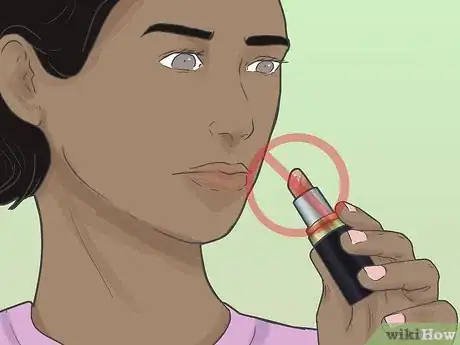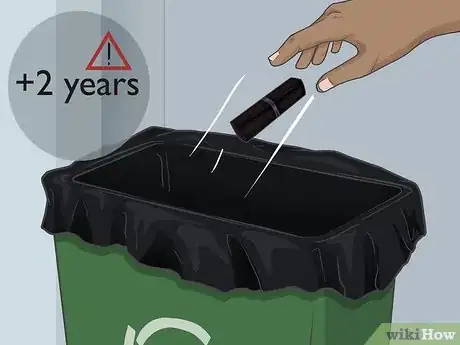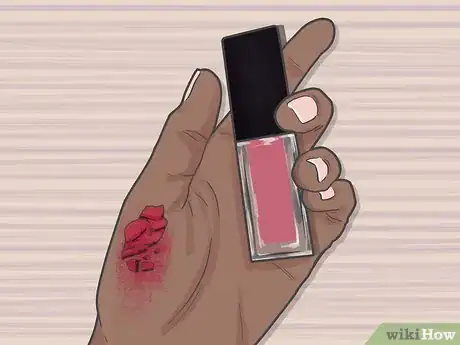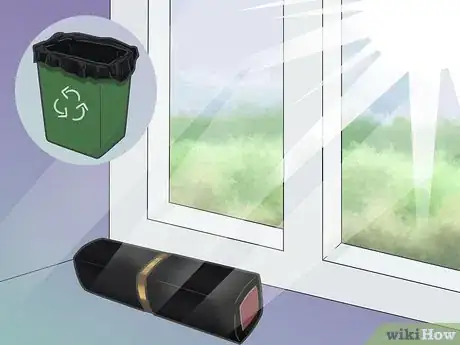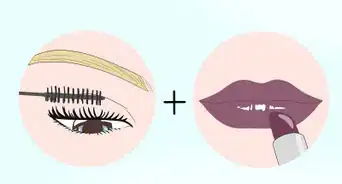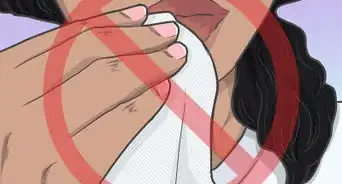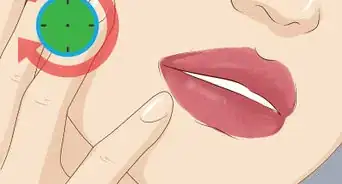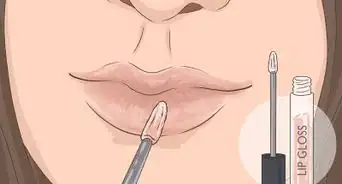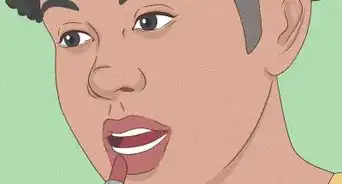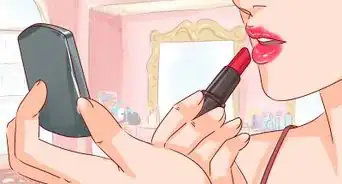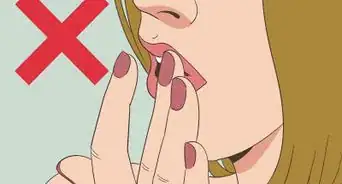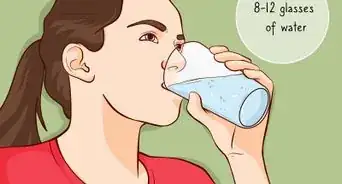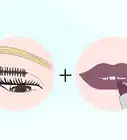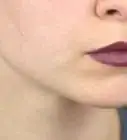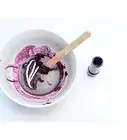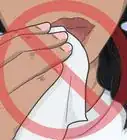This article was co-authored by Sofia Bee and by wikiHow staff writer, Danielle Blinka, MA, MPA. Sofia Bee is a Professional Makeup Artist and Medical Esthetician with more than 20 years of beauty consultation experience. Based in the San Francisco Bay Area, Sofia runs her own beauty practice called "Beauty by Sofia Bee" and has assisted over 1,000 clients including Tyra Banks, Alex Rodriguez, and Russian Rock Group "Leningrad." She received her medical esthetician training from the Marinello School of Beauty in 2001 and received a BS in Business Management from Kaliningrad State University in 2003.
This article has been viewed 41,338 times.
The perfect shade of lipstick can help you look your best, and you likely have a stash of favorites. However, lipsticks don’t last forever, and using an expired product can turn your smile into a frown. Fortunately, it’s fairly easy to determine if your lipstick is ready for a night out or needs to go in the trash.
Steps
Examining the Lipstick
-
1Check if the color has changed or has white spots. As lipstick ages, it typically starts to fade or darken. You may even notice a color difference between the tip and base of the lipstick. Similarly, there may be white specs in the color that weren’t previously there. Look for these signs that the lipstick might be expired.[1]
- You may be able to cut the tip off a lipstick if it’s the only part that’s discolored. However, it’s best to just replace the entire tube.
-
2Look for moisture beads along the surface of the lipstick. As lipstick ages, the ingredients may start to separate. As a result, you may see beads of oil forming along the lipstick. Check the length of your lipstick to see if there are any moisture beads, and throw away the tube if you see any present.[2]
- You may also see moisture collecting inside the tube. This is also a sign it’s time to toss your lipstick.
Advertisement -
3Smell the lipstick to check for unpleasant odors. As lipstick goes bad, the odor changes, often becoming unpleasant. It may smell like potato starch or wax, but it might also smell rancid from the oils in the product. Do a sniff test to make sure your lipstick still smells like it did when you opened it.
- Once a lipstick starts to stink, just throw it away. Otherwise, you’ll be smelling it on your lips all day and could ingest a spoiled product.
Checking for Dryness and Texture Changes
-
1Apply the lipstick on your wrist to see if it spreads smoothly. When lipstick is still good, it’ll spread easily and in an even layer. Swipe the lipstick on your hand or wrist to check its quality. If it slides across your skin, it’s probably still good. However, it’s time to throw it out if it’s hard to apply or provides patchy coverage.
- Your skin may have germs on it. Wash your skin before you test the lipstick. You might also remove the tip of your lipstick afterwards or sanitize it with a spritz of alcohol.
-
2Feel the texture of the lipstick to see if it feels different. As the ingredients in lipstick break down, it’s normal for the texture to change. The product may become soggy, clumpy, dry, or gritty. Check for these types of changes before you apply the product to your lips. If the texture seems different, it’s time to replace your lipstick.[3]
- You can check the texture on your hand or wrist, but you may also need to press your clean finger lightly against the lipstick. In some cases, you can notice changes in texture by just looking at the lipstick. For instance, if you see gritty particles along the side of your lipstick, it’s probably bad.
-
3Notice if the lipstick feels dry or looks flaky after you apply it. If you think your lipstick is good but it’s dry or flaky while you’re wearing it, it’s probably gone bad. Stop wearing your lipstick and throw it away if it leaves your lips dry or gritty, even if it otherwise looks and smells fine.
- Some matte lipsticks can leave your lips feeling dry even when they’re still good. However, you should have smooth, even lip color. If your lip color is flaky or patchy, replace your lipstick.
Using Best Practices
-
1Don’t use lipstick you think may be expired. Lipsticks can be expensive, so you likely want to use your product for as long as possible. Unfortunately, old lipstick might harbor germs and bacteria that can be harmful to your health. Replace your lipsticks as soon as you think they’ve gone bad to protect yourself.
- If you’re worried about cost, limit how many tubes that you purchase at one time. For instance, you might stick to a day color, a night color, and a nude option.
-
2Throw out your lipstick if you’ve had it for 2 years or more. In general, lipsticks only last for 2 years at the longest once you’ve opened them. Even if your lipstick seems good after this point, it’s best to replace it. Let go of your old lipsticks and celebrate with a new tube.[4]
- Since trends change, it may be time to update your color palette anyway.
- An unopened lipstick can last up to 5 years.
Tip: If you wear MAC lipstick, collect your old lipstick tubes because you can exchange 6 old tubes for a new one. Bring your old lipstick tubes to a MAC counter or mail them back to MAC to get your new lipstick.
-
3Expect long-wearing lipsticks to dry out faster. While long-wearing lipsticks can feel like a blessing, they may not last you as long as other formulas. Since long-wearing lipsticks contain ingredients that evaporate quickly, they typically dry out and go bad sooner. Check your long-wearing lipsticks after about a year of use to make sure they still look and smell good.[5]
- If you notice that your product is leaving your lips dry, it may be time to get a new tube of lipstick.
-
4Let go of lipstick that’s been exposed to extreme heat. A lipstick that’s been in the heat will likely lose its original texture and luster, and it could be harmful to your health. Not only is heat damaging to lipstick, it may also allow bacteria to grow on the product. Don’t use a product that you know has been sitting in the heat.[6]
- For instance, throw out a tube that you left in your car or under a hot sun.
Warnings
- Wearing expired lip products can cause an infection or breakout, so use caution. If you think the product is bad, go ahead and throw it out.⧼thumbs_response⧽
- Don’t apply your lipstick right after you eat because it increases the likelihood of bacteria building up in your lipstick.[8]⧼thumbs_response⧽
References
- ↑ http://www.oprah.com/fashion_and_beauty/how-to-tell-when-your-makeup-has-expired_1
- ↑ https://www.marieclaire.co.uk/beauty/make-up/make-up-expiry-dates-88813
- ↑ https://www.theloop.ca/signs-you-should-throw-out-your-expired-makeup/
- ↑ https://www.goodhousekeeping.com/beauty/makeup/tips/a17714/expired-beauty-products/
- ↑ https://www.goodhousekeeping.com/beauty/makeup/tips/a17714/expired-beauty-products/
- ↑ https://www.goodhousekeeping.com/beauty/makeup/tips/a17714/expired-beauty-products/
- ↑ https://www.marieclaire.co.uk/beauty/make-up/make-up-expiry-dates-88813
- ↑ https://www.marieclaire.co.uk/beauty/make-up/make-up-expiry-dates-88813
